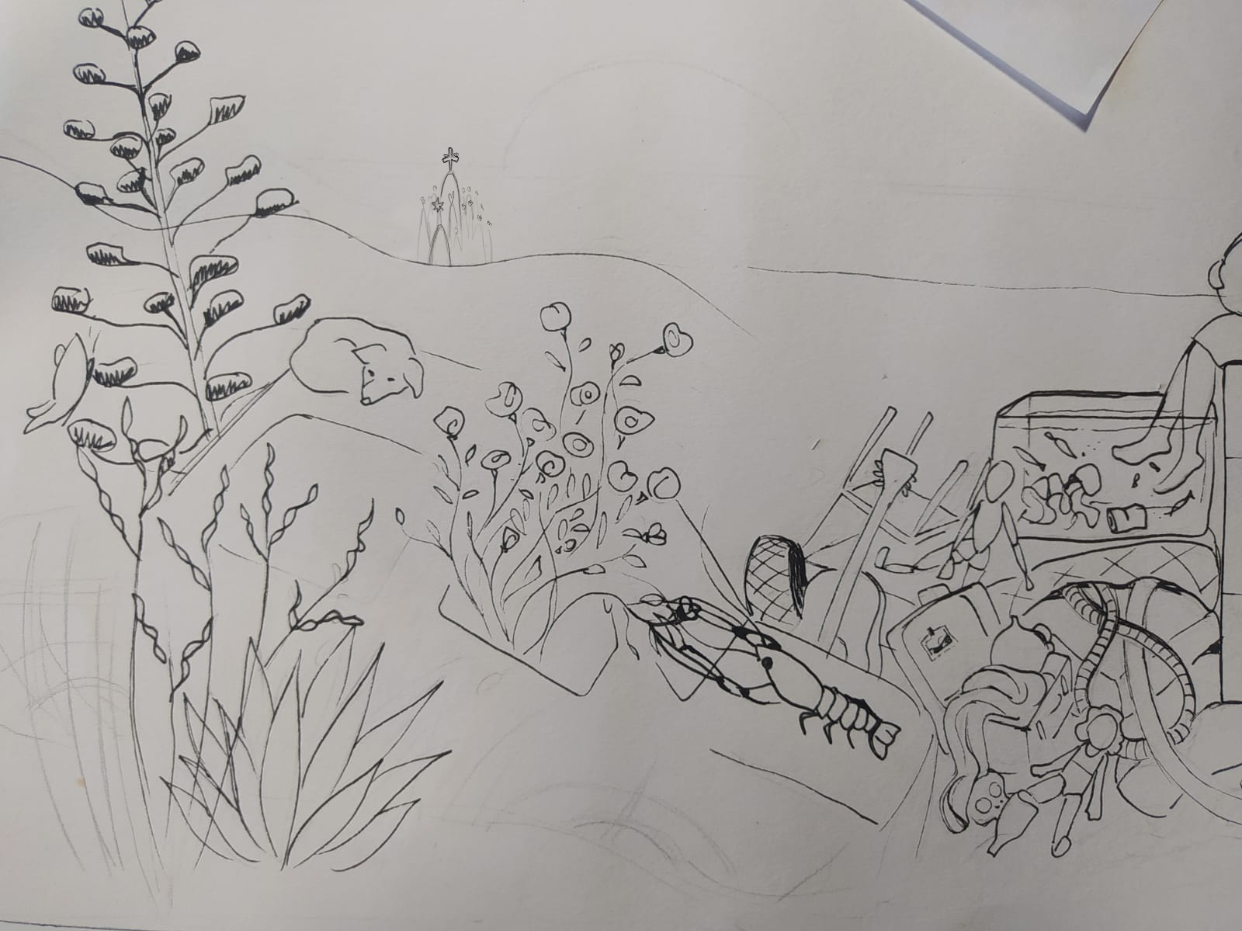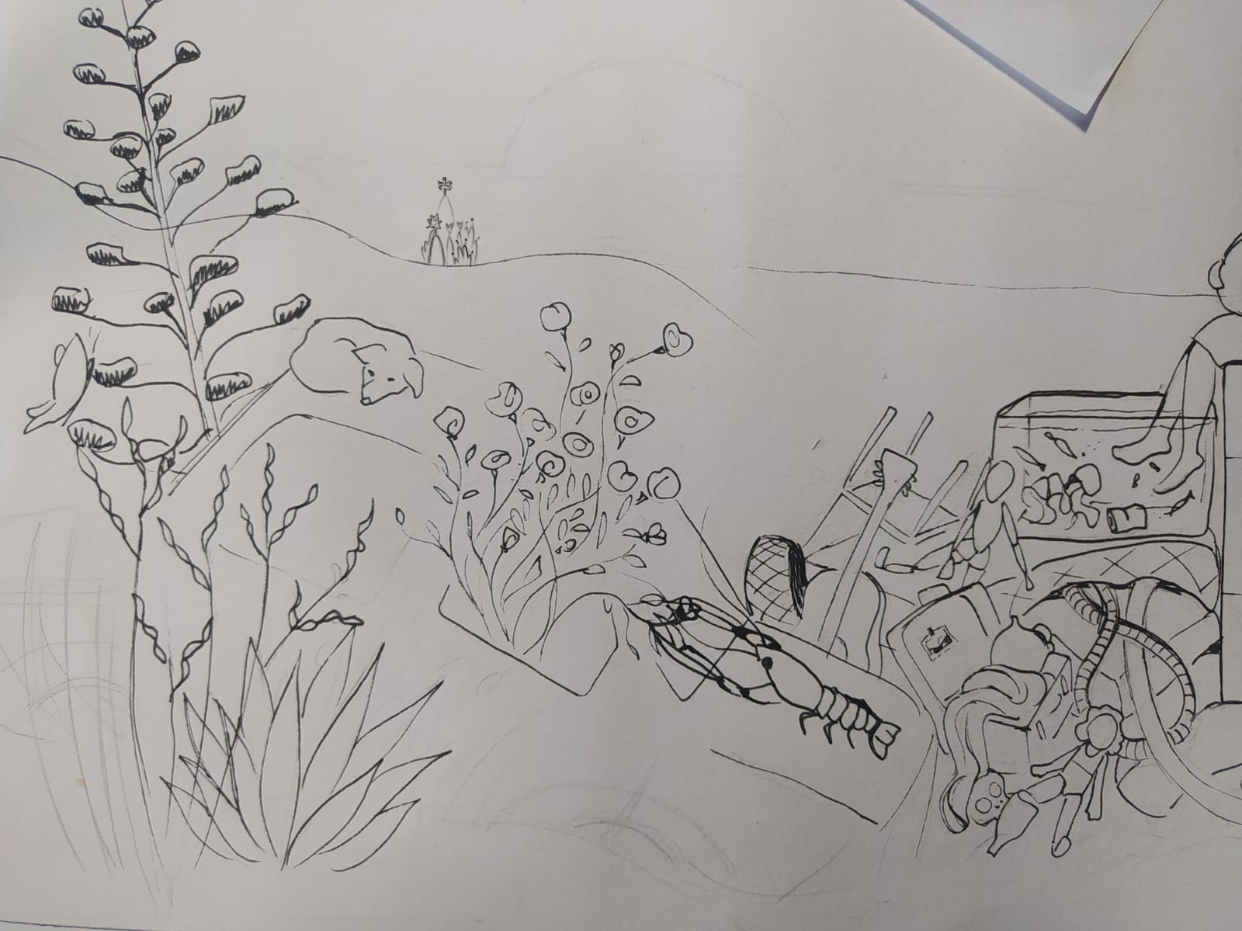
Today is December 8th, the day of the Immaculate Conception. This year, in the city of Barcelona, this very day is a special one: for the first time the star that crowns the Tower of Mary will be lit up, the one that rises above the apse and the first of the Sagrada Familia’s Central towers that’s been completed.
In the mural, the iconic silhouette of the four bell towers states that the landscape we see with the dawn in the background cannot be anything but that of our city. Surely it is the image that best represents the Temple, for many years the bell towers of the facade of the birth of Jesus were the visible face and became a kind of city banner.
But Antoni Gaudí’s masterpiece is a living work, a testimony of the steps of time. And at the point where we are at this time we are closer than ever to the end. It is for this reason that, with the gaze toward the future, we have offered to draw the mural with the Sagrada Familia completed, with the towers of Jesus, Mary and the four evangelists soaring up over the southern sides of the Carmel hill:






It was an image that well suited with the central idea of the mural, that of the woman waiting for a son and who observes the birth of a new day. A hopeful look, it cannot be otherwise, a look towards this nearby sea, at the same time far away, that allows us to expand the visual field and brings us the needed serenity, a look at the horizon, at the days that will come. It had a meaning, therefore, that in this landscape we could contemplate the Sagrada Familia completed, an image of the future and even an image of hope, of a dream that will be achieved.
In the end, however, the classic image of the four bell towers has been set up in the mural, in spite of even the orientation is uncorrect. Changes need time, you know. There will always be someone who upholds the idea that the Sagrada Familia shouldn’t continue after his creator’s death, even if Gaudí had very clear in mind that his dream would have had to be completed by the subsequent generations and so he had arranged.
Then in the mural we may see four windmills that accompany the four bell towers of the Temple. Are they the giants against which Don Quijote fought or are they the aerogenerators people already talk about at the climate change summits? Are we going to see windmills in the area of Collserola or on the Barcelona Coast before the Sagrada Familia is completed? This would presuppose a change in the city skyline. In any case, they are a reminder of the manifest incoherence that the well known gap between the energy we consume and the one the city generates implies. And they are, yes indeed, an image of the future, a future that despite everything we hope it will be better. In the mural therefore, the Sagrada Familia recalls the past and the aerogenerators the future. Together they want to be a summary of the passage of time, of a city and a world in constant transformation.
Past and future. We live the present today with the lighting of the star that shows the forecasts were good: right from the terrace of this house “dressed” with the mural, Maria’s tower sticks out lifting light over the “peeled mountain”. The sketches are from before the tower began to stand out, so the intuition has not failed, the Penitent district will get, starting from today, a new star on the horizon.

PS: By the way, Gaudí said that the Sagrada Familia would be a lighthouse for the city, today this thing will begin to make sense. I’m sure Jean Pierre would have been happy to see this original lighthouse in the middle of the city. But well, let’s not anticipate too much about lighthouses, dams and cliffs, we will talk about it another day.
Previous post : The adventure begins!
Next post : Arachne’s Myth